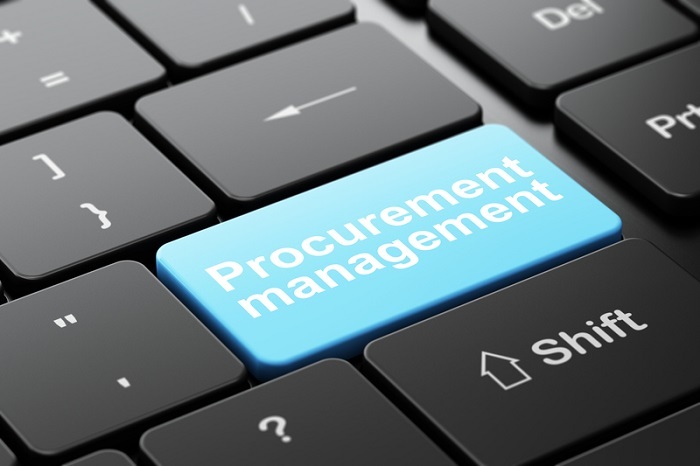
 Data Structure
Data Structure Networking
Networking RDBMS
RDBMS Operating System
Operating System Java
Java MS Excel
MS Excel iOS
iOS HTML
HTML CSS
CSS Android
Android Python
Python C Programming
C Programming C++
C++ C#
C# MongoDB
MongoDB MySQL
MySQL Javascript
Javascript PHP
PHP
- Selected Reading
- UPSC IAS Exams Notes
- Developer's Best Practices
- Questions and Answers
- Effective Resume Writing
- HR Interview Questions
- Computer Glossary
- Who is Who
Centralized vs. Decentralized Contracting in Project Procurement Management
Procurement is such a crucial part of project management that sometimes there is an additional procurement manager for the project based on the size, complexity, and cost of the project. Procurement involves the processes and activities required to acquire goods and services from outside the organization to support project delivery. The core part of procurement management is contracting which is the creation of a legally binding agreement between the buyer and the seller. There are two main approaches to contracting - centralized and decentralized.

In centralized contracting, all procurement activities are handled by a central procurement department or a team dedicated to procurement. This setup enables the consolidation of the buying power and hence better negotiates prices by leveraging economies of scale. Meanwhile Decentralised contracting is a model that involved the distribution of procurement responsibilities across different departments or project teams.
Through decentralized contracting, each team manages its own procurement processes, enabling faster decision-making and greater flexibility. The choice of contracting approaches is based on several factors, like the project's size and complexity, the organization's culture and structure, and the availability of resources.
While both centralized and decentralized contracting approaches have advantages and disadvantages, selecting the right approach is critical to ensuring the success of the procurement process which will ultimately lead to the success of the project.
What is the Start-to-end Process in Centralized Contracting?
In order to make the procurement decisions for multiple departments or organizations, a single entity in charge of procurement management undertakes the following steps ?
Identify the procurement needs ? As a first step for centralized procurement contracting, the procurement needs of the departments or organizations involved are identified, this mainly includes determining what goods or services are needed, the quantity required, the quality standards, and the budget available.
Establish the procurement team ? Upon identifying the procurement needs, the next step is to establish a procurement team. The procurement team consists of experts in procurement, legal, and finance who will be responsible for developing procurement strategies, negotiating contracts, and identifying potential suppliers.
Develop procurement strategies ? The procurement team develops procurement strategies that are aligned with the objectives of the departments or organizations involved. This is done by determining the best procurement methods to use, for example, sole sourcing, competitive bidding or request for proposals.
Identify potential suppliers ? One of the precarious parts of procurement management is maintaining a good relationship with suppliers hence it is important for the procurement team to identify potential suppliers that meet the procurement needs and established standards. The potential suppliers are evaluated based on their experience, reputation, quality of goods or services, and price.
Negotiate contracts ? The procurement team focuses on negotiating contracts once potential suppliers are identified. The negotiation is made until the supplier offerings
meet the needs of the departments or organizations involved such as prices, delivery timelines, quality standards, and other contract terms.
Implement procurement contracts ? Following the negotiation process, the procurement team ensures effective implementation of them by monitoring supplier performance, tracking delivery timelines, and managing contract compliance.
Evaluate procurement outcomes ? To complete the process of centralized procurement contracting, the outcomes of the procurement process are evaluated by the procurement team. For this, the effectiveness of the procurement strategies applied, any area for improvement, and the impact of procurement are evaluated, identified, and measured.
What Are the Advantages of Having a Centralized Approach?
The primary advantage of centralized contracting is that the buying power is consolidated. This facilitates better price negotiation and enables large-scale economic leverage. Through centralized contracting, organizations can reduce costs, ensure consistency in procurement decisions and streamline processes in a more efficient manner.
Another benefit of centralized contracting is the ability that it gives to establish and maintain strong relationships with suppliers. Centralization helps develop long-term relationships with suppliers, which can lead to better terms, discounts, and other benefits. This approach also helps ensure that suppliers meet the organization's standards for quality, ethics, and sustainability.
Additionally, centralized contracting helps manage risk more effectively by consolidating procurement activities, organizations can standardize processes and procedures, reducing the potential for errors and inefficiencies. This type of contracting can also provide better oversight of procurement activities, ensuring compliance with regulatory requirements and mitigating the risk of fraud, corruption, and other illegal activities.
What Are the Disadvantages of Having a Centralized Approach?
Centralized contracting has a few disadvantages too, the primary being the potential for bureaucratic inefficiencies. Centralized teams sometimes tend to become stuck in red tape, leading to delays and an increased budget. This can also lead to a lack of agility and responsiveness due to procurement decisions having to go through a centralized process, slowing down the process of acquiring goods and services. Additionally, the potential for a lack of understanding of local market conditions. Is high as teams may be located far from the projects they support, which can limit their understanding of local market conditions and lead to missed opportunities.
Centralized procurement teams may not have the same level of understanding of project requirements as project teams, leading to procurement decisions that do not meet the project's needs. There is also the risk of a lack of ownership and accountability. When procurement decisions are centralized, project teams may feel disconnected from the procurement process, leading to a lack of ownership and accountability. The potentially limited input into the procurement process may lead to frustration and disengagement.
How is Decentralized Contracting Different from Centralized Contracting?
The steps involved in decentralized contracting is largely similar to that explained above for centralized contracting except for the below ?
The procurement needs and requirements identified are that of the specific, individual department and not multiple departments as is in the case of a centralized system.
The procurement team is established within each department or organization and this team is responsible for making procurement decisions independently.
The procurement strategies developed are aligned with the objectives of the individual department.
The contracts are negotiated based on the needs of the individual department or organization involved.
The contracts are implemented within each individual department or organization.
The procurement outcomes are evaluated within each individual department or organization.
To summarise, the following are the key differences between centralized and de-centralized contracting to refer to while making a choice ?
Centralized Contracting |
De-centralized Contracting |
|---|---|
The decision-making authority is a single entity, for example., a corporation. |
The decision-making authority is spread among multiple entities or units, for example., department-specific unit structure. |
Not flexible due to standardized and centralized procurement activities. |
Flexible and customizable in procurement decisions. |
Consistent in procurement processes and results across projects. |
Procurement processes and results across projects vary based on departments. |
Bureaucratic with strict rules and regulations in the decision-making process. |
Autonomy exists within the individual departments or teams and the decision-making process is more agile. |
What Are the Advantages of Having a Centralized Approach?
Enabling greater flexibility and responsiveness, in decentralized contracting, the responsibilities are distributed across different departments or project teams. This allows each team to manage its procurement processes and decentralized contracting which also leads to faster decision-making and more efficient procurement activities. This approach also provides the ability to build stronger relationships with suppliers which in turn leads to better communication, collaboration, and innovation. Providing greater visibility into local market conditions, teams are able to take advantage of opportunities and mitigate risks. It promotes accountability and ownership among project teams.
What Are the Disadvantages of Having a Centralized Approach?
The disadvantages of decentralized contracting include inconsistent procurement practices, lack of visibility and control, increased costs, lack of leverage in negotiating with suppliers due to the limited buying power of each team member, and the risk of non-compliance with organizational policies and standards, leading to potential legal and reputational risks.
Conclusion
All things considered, the advantages and downsides of centralized versus decentralized contracting must both be weighed. While centralized contracting offers offer economies of scale, better supplier relationships, and greater risk management. Decentralized contracting comes with greater flexibility, responsiveness, and innovation. A well-designed procurement strategy should be adapted based on the structure of the organization, the organization's goals, and culture, as well as the project's needs and requirements and carefully consider the advantages and disadvantages of each approach before choosing the one that best meets the organization's needs.

